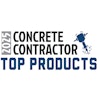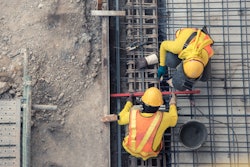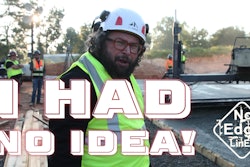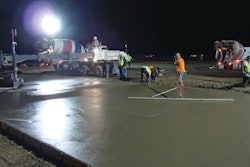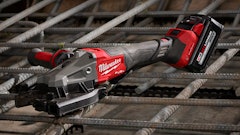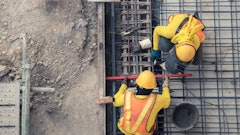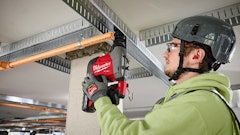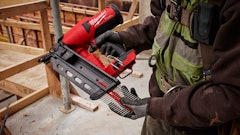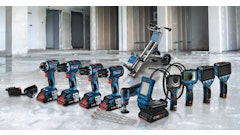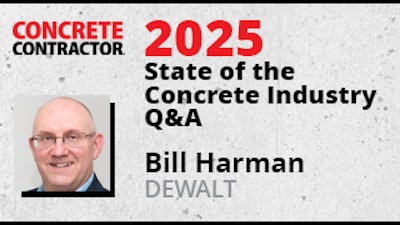
Bill Harman, vice president of product management, commercial and general construction at DEWALT, shares his insight into the state of the concrete industry and the challenges contractors are managing daily. Concrete Contractor connected with Harman over email in June 2025.
Q. What have been the biggest challenges for concrete contractors so far in 2025?
 Bill HarmanDEWALT
Bill HarmanDEWALT
Supply Chain Disruptions — Ongoing disruptions in the supply chain have led to delays in obtaining essential materials like cement, aggregates, and admixtures. These delays have been caused by global shipping issues, labor shortages, and geopolitical tensions.
Impact:
- Projects are being delayed, resulting in extended timelines that lead to increased costs and penalties for contractors.
- Contractors are forced to source materials from alternative suppliers, often at higher prices, reducing profit margins.
Environmental Standards — Evolving environmental standards and customer expectations around sustainable building practices are driving demand for more eco-friendly materials and solutions that reduce carbon emissions.
Impact:
- Contractors and manufacturers are investing in new technologies and materials to meet customer demand.
- Being required to track the data for reporting leads to insights that can improve operational efficiency.
- Contractors that can adapt quickly to the changing requirements will have a competitive advantage.
Labor Shortages — A shortage of skilled labor in the construction industry has made it difficult for contractors to meet project deadlines and maintain quality standards.
Impact:
- Contractors are spending more time and finances on recruitment and training to fill gaps in their workforce.
Weather-Related Challenges — Unpredictable weather patterns, including extreme heat and heavy rainfall, have disrupted construction schedules and affects the curing process of concrete.
Impact:
- Projects are taking longer to complete, increasing labor and equipment costs.
- Contractors are implementing additional measures, such as protective coverings and temperature control systems, to mitigate weather impacts, which increases costs and reduces margins.
Q. What has been happening to address these challenges? How impactful have these efforts been?
To address some of these challenges, DEWALT has developed several solutions that allow contractors to optimize their workflow, ease the effects of labor shortage, and meet environmental standards. One of our more recent product developments for the concrete contractor is DEWALT POWERSHIFT, a cordless equipment system that harnesses electrification to optimize the workflow of concrete and construction jobsites. The line includes a vibrator, backpack vibrator, concrete power screed, rammer, plate compactor, core drill and stand, 554WH battery and 550W charger. The system can produce up to 60 percent less CO2e emissions during use vs. gas-powered equipment* and meets the critical needs of power and runtime without compromising efficiency and performance. The equipment is also ergonomic, lightweight, and user-friendly with features like soft start, to help less experienced skilled workers adjust to using these high-performance tools.
As another example, DEWALT has partnered with Converge to launch the DEWALT Signal Sensor. This technology leverages Converge’s ConcreteDNA platform to interpret real-time data from the sensor. The DEWALT Signal Sensor allows users to observe compressive strength gain of concrete, and to predict when it will reach critical strength through advanced technology and local weather data. This optimizes workflows by allowing concrete professionals to begin work sooner as users can directly measure hardening rather than relying on estimation. Users can also more precisely measure the exact amount of cement needed in the mixture, which helps reduce unnecessary cost and carbon emissions.
*vs. leading competitors, average of individual DEWALT POWERSHIFT equipment weighted by lifetime emissions during use; US average grid output emission rates and grid loss based on the US EPA's eGRID2022 database, published Jan. 30, 2024 (epa.gov/egrid); fuel emissions factors based on the U.S. Energy Information Administration's Carbon Dioxide Emissions Coefficients for finished motor gasoline, published Sep. 7, 2023 (eia.gov).
Q. Where are concrete contractors at with employment and the skilled labor shortage?
From being out in the field and on jobsites, my sense is no concrete contractor is immune to labor constraints. Some have chosen to take fewer contracts; others have absorbed overtime pay to navigate these challenges. In either case, it impacts their profitability.
DEWALT recognizes the critical need for skilled labor. To help navigate this challenge, the brand has committed $30M by 2027 to “Grow The Trades,” providing scholarships, grants, resources, training and tools to support current tradespeople and create pathways for young people to enter the trades.
Q. What innovations would you like to see developed in concrete equipment and tools?
Continued development on electrifying the jobsite — eliminating cords and hoses helps minimize trip hazards. Removing gas on the jobsite also mitigates engine repair, having to deal with tank refills and in general dealing with the headaches of storing and usage of gas.
Q. What do you expect the biggest challenge(s) will be in 2026 for the concrete industry?
My belief is that the current challenges will, for the most part, remain in the near future.
I would say labor constraints will continue to be a concern and navigating the macroeconomic uncertainty and overall pricing of materials will remain front and center.
Q. What are the latest changes for DEWALT?
DEWALT has continued to advance the connected jobsite. Technology like Site Manager and TOOL CONNECT+ allow for asset management, reviewing of critical safety event data, and even understanding utilization patterns to make users safer and more productive.
We also are continuing to advance our DEWALT DESIGN ASSIST (or DDA Software), which is a world-class connection design software for anchoring. One of the most time-consuming tasks for concrete contractors is prepping holes and placement layout of structural anchors, threaded rod, and rebar connections. Making this process more productive with fewer errors is a huge value-add to customers.
Q. What innovations in equipment do you anticipate in concrete equipment for 2025 and the near future?
Electrification in the space will continue to advance, by way of more cordless tools and more powerful battery solutions, driving the conversion from gas to cordless.
Q. What has caught your interest lately in concrete?
The concrete trade has been evolving rapidly, with several trends and innovations catching my attention lately. Some of the key areas that have sparked interest include:
Advancements in Sustainable Concrete — The push for eco-friendly construction has led to the development of sustainable concrete solutions, such as carbon-neutral concrete and recycled aggregate concrete. These materials help us better meet our customers’ demands and reduce the carbon footprint of construction projects. Contractors are exploring ways to integrate these solutions without compromising on strength and durability.
Use of AI and Automation — Artificial intelligence and automation are being increasingly adopted in the concrete trade for tasks like mix optimization, quality control, and predictive maintenance. AI-driven tools are improving efficiency and reducing waste in concrete production. This automation is helping contractors address labor shortages and streamline operations.
Ultra-High-Performance Concrete (UHPC) — UHPC is gaining traction for its exceptional strength, durability, and resistance to environmental factors. It is being used in critical infrastructure projects, such as bridges and high-rise buildings and the long lifespan reduces maintenance costs, making it a cost-effective choice in the long run.
3D Printing with Concrete — The use of 3D printing technology in concrete construction is revolutionizing the way structures are designed and built. It allows for faster construction, reduced material waste, and complex designs that were previously difficult to achieve are now possible, unlocking some really creative thinking across the industry.
The concrete trade is undergoing a transformative phase, driven by sustainability, technology, and the need for resilience. These developments are not only improving the quality and efficiency of construction but also unlocking new opportunities. Contractors and industry professionals are actively exploring these innovations to stay ahead in a competitive market.



